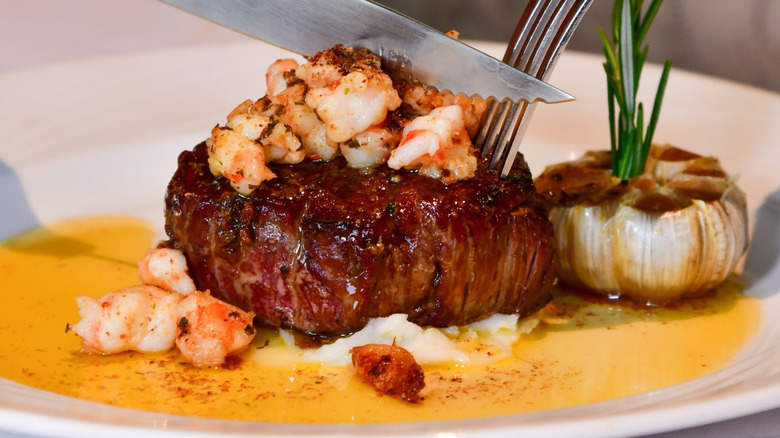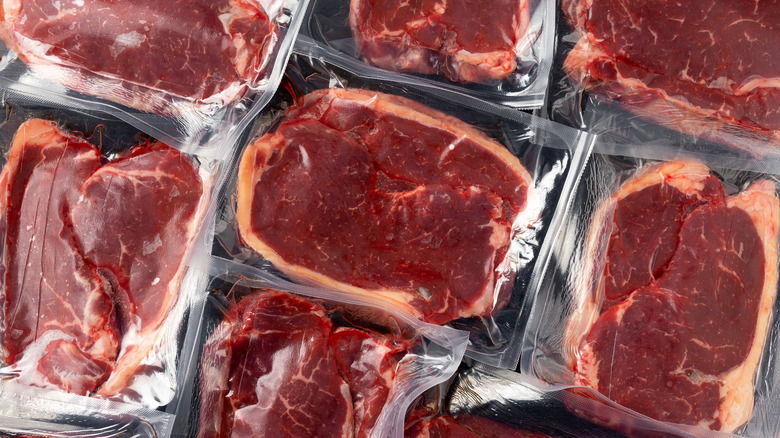The New York-Based Steakhouse That Ages Its Beef For 35 Days
Aging steaks is one of those things to which the texting shortcut IYKYK (if you know, you know) certainly applies. Meat lovers and experts may debate the aging method they prefer — wet or dry — but they tend to agree that aging results in a more flavorful and tender steak. Perhaps that's why The Palm, the venerable New York steakhouse that has locations across the United States and Mexico City, confirmed to Food Republic that it ages all of its USDA Prime beef for at least 35 days. And the restaurant, which first opened its doors in 1926, knows a thing or two about steak; Food Republic named it one of the best steakhouse chains in the United States in 2024.
Although The Palm does offer dry-aged selections, like its New York strip steak, its USDA Prime cuts are wet-aged. The difference between wet- and dry-aging is simple. Dry-aging uses temperature, air, and humidity to dehydrate the beef and concentrate its flavors, giving the meat a stronger, almost cheesy taste. With wet-aging, meat is stored in a vacuum-sealed bag that allows the meat's own juices — and the enzymes within those juices — to break down and tenderize it. This method works particularly well for leaner cuts of beef like filet mignon, flank steak, and a boneless strip. Wet-aged steaks tend to have a sweeter flavor that stands up well to seasonings and sauces.
Wet-aging is the most common method for steaks
When you're at the grocery store, understanding the wet-aging process can help you choose the best steak. You can usually spot a wet-aged steak by its vacuum-sealed plastic packaging, which is the preferred method for the majority of restaurant and grocery store steaks. This is because wet-aging is a faster, more affordable, and more efficient process than dry aging.
What's important to pay attention to is how long the steak has been aged. While tenderness increases in the first few weeks, the flavor and texture will continue to change, and aging too long can lead to spoilage.
While there are no set rules on how long to age a steak, experts generally agree that it should be somewhere between seven and 28 days if aging meat at home. Meat purveyors, on the other hand, say that they age their steaks for no less than 32 days and up to 60 days, which means The Palm's 35 days seems to be right in line with recommendations.


